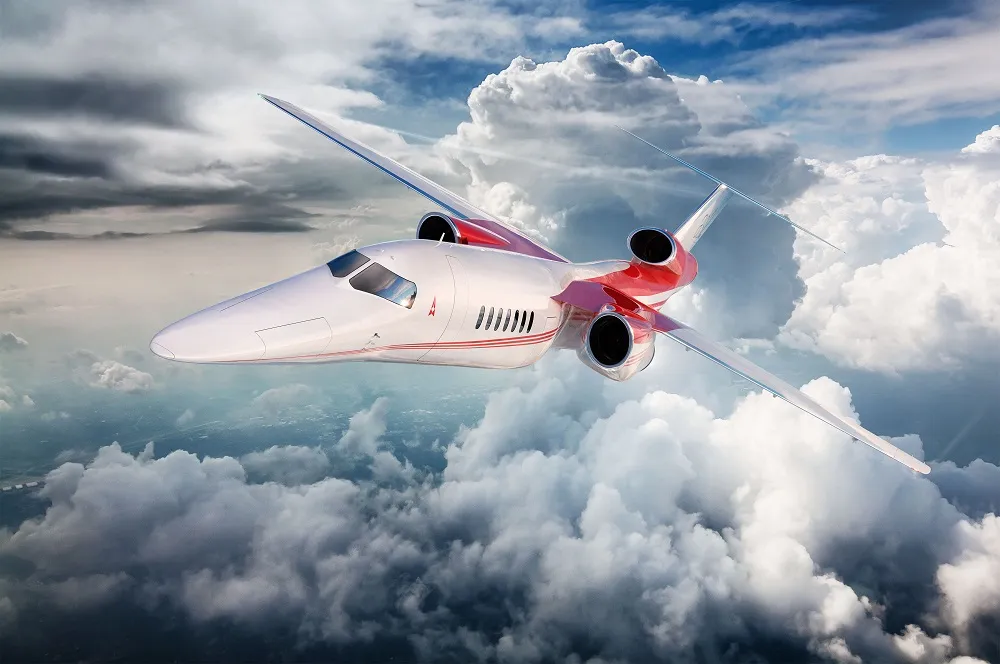
FAA proposes new rules to help supersonic flight
Jun 17, 2019

The Federal Aviation Administration has announced proposed new regulations aimed at facilitating the resurgence of supersonic flight. These rules are designed to address noise concerns associated with sonic booms, which have historically hindered the commercial viability of supersonic travel. By establishing specific noise standards and promoting advanced technologies, the FAA aims to create a framework that balances innovation with environmental considerations. The initiative reflects a growing interest in supersonic travel, as manufacturers and airlines explore the potential for faster air travel, while ensuring compliance with safety and environmental regulations. Public feedback will be sought before finalizing the rules.
Understanding FAA's Proposed Rules for Supersonic Flight
The Federal Aviation Administration (FAA) has recently unveiled its proposed rules aimed at facilitating the revival of "supersonic flight". This move is significant, considering the previous bans and restrictions that have hindered the development of supersonic commercial aircraft. The new regulations are designed to ensure safety alongside environmental sustainability, which is a crucial aspect of modern aviation development.
Key Features of the Proposed Rules
Among the most notable features of the proposed rules are the following:
| Feature | Description |
|---|---|
| Noise Standards | The FAA proposes to establish new noise standards that will allow supersonic aircraft to operate over land, significantly relaxing the previous restrictions that prohibited this due to noise concerns. |
| Environmental Reviews | Enhanced environmental review processes are set to be introduced to ensure that supersonic flight aligns with current sustainability goals. |
| Operational Guidelines | The proposed rules will lay out clearer operational guidelines for the testing and commercialization of "supersonic jets", ensuring that safety is prioritized at every stage of development. |
Impact on the Aviation Industry
The implications of these proposed rules are vast and could reshape the landscape of the aviation industry. For manufacturers and airlines, the new regulations present an opportunity to innovate and invest in "supersonic technology". This can lead to the development of faster, more efficient air travel options that could significantly reduce flight times across long distances.
Moreover, the revival of "supersonic flight" could lead to increased competition among airlines, potentially resulting in lower fares for consumers. As "supersonic jets" become a commercial reality, travelers may soon enjoy the benefits of reduced travel times without sacrificing comfort or safety.
Environmental Considerations
One of the most pressing concerns regarding "supersonic flight" has been its environmental impact. The FAA's proposed rules address this by incorporating stringent environmental assessments into the approval process for new aircraft. These assessments will evaluate the potential effects of supersonic flights on air quality, noise pollution, and climate change.
In addition, manufacturers will be encouraged to develop more efficient engines that minimize fuel consumption and lower emissions. This focus on sustainability is crucial in an era where the aviation industry faces increasing scrutiny regarding its environmental footprint.
Potential Challenges Ahead
Despite the promising aspects of the FAA's proposed rules, challenges remain. One major hurdle is the technological advancements required to meet both safety and environmental standards. Manufacturers will need to invest significantly in research and development to create engines that can operate at supersonic speeds while adhering to noise regulations and reducing emissions.
Additionally, public perception and acceptance of "supersonic air travel" will be critical. While many travelers may welcome faster flights, concerns over environmental impacts and noise pollution could hinder widespread acceptance. The FAA and industry stakeholders will need to engage in transparent communication with the public to address these concerns and build confidence in the safety and sustainability of "supersonic jets".
The Future of Supersonic Flight
The FAA's proposed rules mark a significant step forward in the quest for "supersonic flight". If implemented successfully, these regulations could pave the way for a new era of air travel, characterized by speed and efficiency. As more companies enter the "supersonic aircraft" market, we can expect innovations that redefine how we think about air travel.
In conclusion, the proposed FAA rules are a crucial development in the aviation sector. They not only aim to revive "supersonic flight" but also emphasize safety and environmental stewardship. As the industry moves forward, stakeholders must prioritize sustainable practices to ensure that the benefits of supersonic travel can be enjoyed without compromising the planet's health.
Conclusion
The future of aviation is on the brink of transformation, with "supersonic flight" poised to become a reality once more. The FAA's proposed rules serve as a foundation for this new chapter, emphasizing safety, innovation, and sustainability. As we move forward, it is essential for all parties involved to collaborate and adapt to ensure that the dream of flying faster than sound becomes a safe and environmentally friendly reality.
Related Articles

Explore Thailand: The Best Islands to Visit for Paradise, Adventure, and Relaxation

The Ultimate Guide to the Best Islands in Thailand for Your Next Getaway

Do babies need passports? How to get a passport for a newborn

How to get a U.S. passport fast: here’s how to expedite the process

What is Mobile Passport Control: 5 reasons why you should use it

SENTRI vs. Global Entry: A detailed guide

Do you need a passport to go to the Bahamas? Let’s find out

Do you need a passport to go to Mexico? A detailed guide

Do you need a passport to go to Canada? We got the answer

Do You Need a Passport for a Cruise: An Essential Travel Guide

Booster Seat Requirements: All the Rules to Follow in Your Rental Car

What Are the World’s Most Powerful Passports, and How Does Yours Rank?

How to Take a Passport Photo at Home: A Helpful Guide

You've got to have heart! Southwest's new livery

Your opinion: Should water be free on low cost carriers?

Young women bolder than guys as solo travellers
